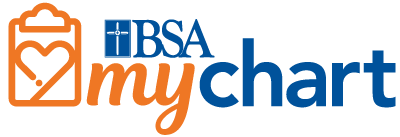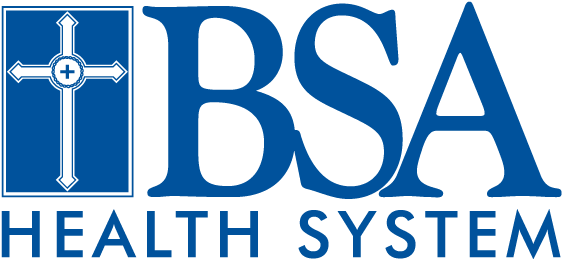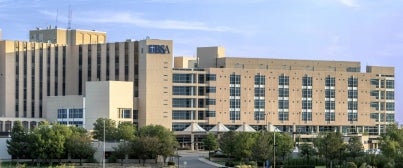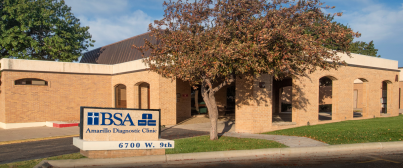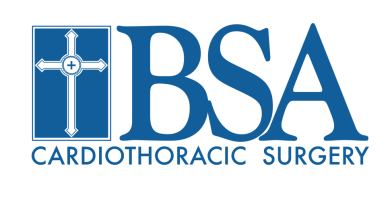First Name *
Last Name *
Address *
City *
State *
- Select - Alabama Alaska American Samoa Arizona Arkansas California Colorado Connecticut Delaware District of Columbia Florida Georgia Guam Hawaii Idaho Illinois Indiana Iowa Kansas Kentucky Louisiana Maine Marshall Islands Maryland Massachusetts Michigan Minnesota Mississippi Missouri Montana Nebraska Nevada New Hampshire New Jersey New Mexico New York North Carolina North Dakota Northern Marianas Islands Ohio Oklahoma Oregon Palau Pennsylvania Puerto Rico Rhode Island South Carolina South Dakota Tennessee Texas Utah Vermont Virgin Islands Virginia Washington West Virginia Wisconsin Wyoming
Zip Code *
Phone Number *
Email *
Gender *
- Select - Male Female
Provider *
- Select Provider - Jason Acevedoes, M.D. Trisha Agle, P.A. Steven Agle, M.D. Sumer Al-Alusi, M.D. Ikha Alazzawi, M.D. Deanah Alexander, N.P. Farah Aljuboory, M.D. Anita Allison, FNP-C Julie Allman, M.D. Andrew Alpar, O.D. Stephanie Alvarado, APRN-CNP Refugio Alvarez, M.D. Justin Amaro, D.O. Wesley Anderson, O.D. Randolph Andrews, D.C. Courtni Andrus, F.N.P. Kimberly Anglin, F.N.P. Kevin Appel, O.D. Carlos Arche, M.D. Royce Armstrong, Au.D. Daniel Arsenault, M.D. JoBeth Augustyniak, D.O. Matthew Ayala, FNP-C Beverly Aycock, FNP Alain Aymele Jennifer Baker, F.N.P. Christi Baker, M.D. Alicia Balderas, P.A. Bruce Ballard, C.R.N.A. Susan Baltz, F.N.P. Larry Balzer, M.D. Alanna Barfoot, D.O. Emmanuel Barias, M.D. Preston Barlow, P.A. Kristen Barrick, L.P.C. Jose Barrios, MD Anthony Bass, O.D. Jodi Bassett, LCSW Lyudmyla Battin, F.N.P. Martin Bautista, M.D. Dean Beddow, O.D. Kyla Beedy, FNP-C Daniel Beggs, M.D. Hayden Behling, PA Tilahun Belay, M.D. Dezirae Belcher, APRN-CNP Gabriela Benavides, FNP Deni Berry, FNP Stuart Berry, O.D. Ravindra Bharadwaj, M.D. Jiten Bhula, M.D. Michael Bibler, DO Robert Bidwell, M.D. Shane Biggers, D.C. Robin Birch Keith Bjork, M.D. Christopher Black, DO Jon Blackwell, D.C. Scot Blakeman, D.O. Megan Blasingame, CRNA Jay Blasingame, M.D. Kathryn Bonds, M.D. Kerri Bosley, F.N.P. Rachel Botkin, APRN-CNP D'Aun Bowers, P.A. Sandra Boyd, FNP Ako Bradford, M.D. Heather Bradshaw, FNP Amy Brasher, F.N.P. William Braudt, D.C. Lindsey Brewer, F.N.P. Tommy Brian, F.N.P. Kate Bridges, FNP-C Mary Ellen Briones, FNP David Brister, M.D. Dalton Britt, OD Jessica Brittain, ACNP Tyler Britten, M.D. Bart Britten, M.D. Bobbi Britto, L.P.C. Leon Brook Kathryn Broussard, FNP Krista Brown, FNP-C Lisa Brown, FNP William Brown, C.R.N.A. Wade Browne, CRNA Sharon Bryant, N.P. Chris Bunch, M.D. Gennaro Buontempo, CRNA Anna Burson, MD Jon Bush, M.D. Kelli Butler, D.C. Carla Caballero, FNP Manuel Caga-Anan, M.D. David Cahill, AuD R. David Caldwell, M.D. Griselda Camacho, M.D. Aimee Campbell, L.P.C. Beatriz Campos, L.P.C. Catherine Cantway, MD Brandy Caple, F.N.P. J. Taylor Carlisle, M.D. Elizabeth Carroll Terri Carroll, FNP Octavio Casas, D.C. Charlotte Cash, F.N.P. James Cassuto, M.D. Trudy Cates, CSFA William Chafin, O.D. Earl Chase, D.O. Leticia Chavez, F.N.P. Ming Chen, MD Manon Childers III, M.D. David Childress, M.D. Ryan Chisum Stacy Cirone, R.N.F.A. Kimberly Clark, F.N.P. Kathleen Clark, M.D. Abby Clark, M.D. David Bruce Clarke, M.D. Chelsie Clawson, L.P.C. Cled Click, O.D. Karah Cloxton, MD Stefanie Cobb, M.A., L.P.C. Lynn Cobb, LPC Wilson Cochrane, P.A. Jennifer Cockrum, APRN-CNP Erica Cole, C.R.N.A. Cassie Colson, FNP Jo Anne Cook, LPC, LCDC George Cook, M.D. Andre Coombs, M.D. Nancy Cooper, F.N.P. Delaney Cooper, F.N.P. Jordan Cooper, C.R.N.A. Justin Corbin, M.D. John Todd Cornett, O.D. Nathaniel Covarrubias, PA-C Jim Coventry, MSW-LPC Stephen Cowan, O.D. Eric Cox, M.D. Dhana Cox, M.D. Amanda Cox, FNP-C Robert Crabtree, M.D. Alyssa Crawford, F.N.P. Darci Crawford, F.N.P. Damon Cross, D.C. Jennifer Crowell, FNP-C Amy Cruth, DO Susan Cruz, FNP Shauna Cruz Kylie Culp, F.N.P. Cody Culwell, M.D. Keri Cummings, M.D. Jackie Curl, C.R.N.F.A. Tara Curtis, FNP-C Karen Cutts, M.D. Brandon Dabney, O.D. John Scott Dalston, M.D. Bejan Daneshfar, M.D. Abdullah Dar, M.D. Thomas Craig Darter, M.D. Patrick Daughtry Tabitha Davies, D.O. Whitney Davis, LMFT Larissa Davis, F.N.P. William Davis, MD Glena Davis, D.O. Karen Davis, MOA-LPC Stephanie Dawdy, LPC Letta Day, MA LCDC- LPC Lukas Day, LPC Anthony C. De Mory, M.D. Johannes De Riese Derrell DeLoach, F.N.P. Monty Denney, C.R.N.A. James DeSantis, M.D. Haylee DeVries, PA-C Blake Dewitt, M.D. Dennis Dey, P.A.-C. Meenakshi Dieguez, M.D. Javier Dieguez, M.D. Stephanie Diehlmann, M.D. Nam Do Do, M.D. Mandy Dobrowolski, NP Amber Doden, CRNA Wesley Dosher, MD Mark Drew, M.D. Amber Duran, L.M.S.W. John Dzik, D.O. Allie Eagle, L.M.F.T. Amber Eddins, M.A., L.P.C. Susan Edionwe, M.D. Robert Ehle, D.C. Effiok Ekpenyong, M.D. Shelly Elam, N.P. Thomas Elder, FNP Mary Elhardt, M.D. R. Todd Ellington, Jr., M.D. Alana Elmquist, GNP-C Terry Emerson, N.P. Erik Evans, C.R.N.A. Jennifer Fanelli, L.P.C. Bud Faris, D.O. Nolan Farmer, D.O. Diane Farrington-Curtis, MA, LPC Tonya Fields, F.N.P. James Fitch, O.D. Kevin Fleming, FNP-C Michael Flores, M.D. Martha Flores, FNP-C Deirdre Floyd, FNP-C John Forage, M.D. Samantha Ford, D.C. Justin Ford, L.P.C. Leah Ford, NP Mark Ford, Jr., D.C. Michelle Fowler Elizabeth M. (Betsy) Franks, MSSW, LCSW Richard Freeze, D.C. Gloria Fuller-Lewis, F.N.P. Jennifer Gallagher Gerald Gallinghouse, M.D. Charity Gardner, FNP-C Mark Garnett, D.O. Lonnie Gellner Amal Ghneim, D.O. Hayley Gibson, FNP Jerry Gillis, Jr., D.C. Eric Gomez, D.C. Olga Gonzalez, F.N.P. Anuradha S. Gopalachar, M.D. Ritu Goradia, M.D. Scott Gordon, P.A. Savannah Gossett, FNP-C Bennet Graham, FNP-C Heather Graves, C.R.N.A. Melissa Gray, LPC Randy Gray, D.C. Renee Gray, NP Weldon Green, M.D. Sean Green, P.A. John Gregg, M.D. Melissa Griffith, N.P. Jeffrey Grimes, FNP Corbie Grimes, L.P.C. Robert Gross, M.D. Wendy Guest Rajeev Gulati, M.D. Christopher Gulley, M.D. Mitra Haghiri-Canales, M.D. James Hale, M.D. Christin Hall, MA, LPC Debra Hammond, M.D. David Hampton, M.D. Julie Hampton, NP-C Brandon Haney, M.D. Lucas Haney, O.D. Kenyon Haney, LPC Kristi Harden, F.N.P. Mary Hardie, C.R.N.A. Ki Hargis, OD David Harney Lezlie Harris, FNP Renetta Harris, LPC Syed Hasan, M.D. Yohey Hashimoto, M.D. Dustin Hawley, M.D. Phil Haynes, Jr., D.C. George Hays, CRNA Dominic Heffel Jennifer Heiman, FNP-C Emily Helms, F.N.P. Jason Hemmerich, M.D. Robert Henry, P.A. Harry Marcus Henson, MD Kelsey Hernandez, ACNP-BC Pedro Hernandez-Lattuf, M.D. Tasha Herrera, F.N.P. Randy Herring, M.D. Cynthia Hewett-Mills, FNP-C Eric Higgins, D.P.M. Mai Vy Hoang, O.D. Natalie Hobdy, MD David Hohon, M.D. Matthew Holcomb, N.P. William Holland, D.O. Ryan Hollingsworth, O.D. Shane Holloway, M.D. Kayci Houlette, OD Debbie Hoving, M.D. John Howard, M.D. Tonia Hudson, P.A. April Hunley, F.N.P. Megan Husband, M.D. Cindy Hutson, D.O. Esther Iheukwumere, M.D. Kelly Irons, LSA Chance Irwin, M.D. Marc Irwin, M.D. Anna Isaacs, M.D. William Isaacs, M.D. Asm Islam, M.D. Thayer Ismaael, M.D. Juvenal Jabel, M.D. Behnoush Jaberian Doraji, PA-C Keith Jacoby, D.C. Bola Jaiyeola, FNP-C Carolyn Jansa, NP Megan Janson, M.D. Suzanna Jarrell, FNP Tamera Jarrous, FNP Ammar Jarrous, M.D. Holly Jeffreys, F.N.P. Michael Jenkins, M.D. Sydnee Jenschke, APRN-CNP Barbara Jensen, FNP-C Shaun Jester, D.O. Paul Jew, M.D. Ruiyang Jiang, M.D. Eric Johnson, P.T. Kelby Johnson, F.N.P. Brittany Johnson, F.N.P. Thomas L. Johnson, M.D. H.R. Johnson, M.D. Christopher Jones, D.P.M. Jennifer Jones, P.A. Melanie Jones, F.N.P. Carrie Jones, M.A., L.P.C. Melissa Jones, FNP-C Lauren Jones, FNP-C Jason Jones, M.D. Adeline Jou-Tindo, M.D. Felipe Jubay, M.D. Manuel Juson, M.D. Nirmala Kamnani, M.D. Laxmichand Kamnani, M.D. Richard Katseres, M.D. Jeffrey Alan Kee, PH.D Alan Keister, M.D. Cecelia Kern, L.P.C. Daniel Kern, APRN-CNP Russell Kershen, D.C. Zhila Khamisi ASL, PA-C Naeem Khan, M.D. Fahad Khan, M.D. Karen Khan, O.D. Bharat Khandheria, M.D. Karuna Khatri, M.D. Caleb Kim, D.O. Christina Kimbrell, FNP Darrell Kimbrough, FNP-C Tim King, C.R.N.A. Allegra Kinzer, FNP Pamela Kirby, Psy D. Sam Kirkendall, M.D. Donna Kizziar, FNP-C Mason Kizziar, RNFA Katrina Klaehn, L.P.C. Lauren Knight, MD Dennis Knudsen, M.D. Christopher Kolze, M.D. Rouzbeh Kordestani Lance Krogh, D.C. Renea Krtalic, FNP-C Camella Ladd, NP Casey Lagan, M.D. Michael Lamanteer, M.D. Dustin Lambert, F.N.P. Toni Lambert, FNP-C Misty Lance, MSN, APRN, FNP-C Callie Land, FNP David Langley, M.D. Maegan Laughlin, AuD Jennifer Laurich, LPC Erica Leathers, N.P. Kathleen Lee, FNP-C Dorothy Lee, C.R.N.A. Jay Lee, MD Luke Lennard, M.D. Anders Leverton, M.D. Chad Lewis, M.D. LaTina Lewis, F.N.P. Jeffrey Lim, M.D. Kelly Linley, P.A. Candace Lipshy, O.D. Alecia Litchfield, FNP-C Benjamin Lockmiller, C.R.N.A. Ashley Longbine, APRN-CNP Cristin Lott, PA-C Brock Lovett, D.C. Mariana Lucero, M.D. James Lusby, M.D. Alastair Lynn-Macrae, M.D. Lewis Lyons, M.D. Lyudmyla Lysenko, M.D. Megan Maguire-Marshall Scott, MD Andrew Mak, MD, MBA Jose Maldonado Hevia Jeanine Malone, FNP-C Gary Mangold, M.D. Rex Mann, M.D. Wallace Mann, Jr., M.D. Tori Marnell, M.D. Meghan Marnell, Ph.D. Jimmy Martin, O.D. Lance Martin, M.D. James Martindale, M.D. Jamey Maxwell, D.C. Cherity Mays, FNP-C Lawrence McAfee, M.D. Aldeena McAlister, LPC Rebecca McCarthy, M.D. Edward McCarthy, M.D. Connie McCoy, F.N.P. Rene McCutchen, FNP Jennifer McGaughy, M.D. Dianne McKenzie, M.D. Skyler McLaurin-Jiang, M.D. Mckenzie McManus, F.N.P. Caron McMillian, FNP R. Kelly McMurry, D.O. Kathryn McNeil, M.D. Bekki McQuay, LPC Bobby Medford, LPC Clyde Meeks, M.D. Brenda Meeks, Ph.D. Kris Mehta, MD Fatima Mendoza, FNP-C Thomas Merriman, M.D. Edilberto Miguel, M.D. Scott Miller, M.D. Marilyn Miller, MSN-RN, FNP-C Sean Milligan, M.D. Rosa Angelica Miranda, FNP-C Holly Mitchell, M.D. Vijay Mohan, M.D. Gary Monroe, M.D. Tory Moore, O.D. Timothy Mooring, M.D. Nina Moreno, LPC Kinsey Morgan Stacie Morgan, MD Alyce Morton, F.N.P. Sergio Muniz, M.D. Britany Muniz, F.N.P. Kristen Muru William Myers, P.T. Michael Nash, M.D. Haq Nawaz, M.D. Natasha Nawaz, M.D. Anna Needham, LPC Susan Neese, M.D. Barbara Nefstead, N.P. Tyson Neill, D.C. Kimberly Nelson, M.D. Marinda Newkirk, FNP Wilbert J. Newton, MA, LPC Giang Nguyen Nguyne, M.D. Jenny Nguyen Jenny Nguyen, M.D. Steven Norris, M.D. Kori Norris-Trimble, P.A. Neal Nossaman, O.D. Lisa O'Brien, O.D. Christine O'Connor, O.D. Shalea O'Kelly, N.P. Kaci O'Neal, N.P. Elizabeth Ogbonna, F.N.P. Anthony Oliva April Oliver, F.N.P. Ositadinma Opara, D.O. Kerry Ormson, Ed.D. Susan Ortiz, F.N.P. James Osteen Sumesh Parat, M.D. Micheal Parker, D.C. Jeremy Parker, PA-C Alexander Parr, M.D. Nikhil Patankar, M.D. Tanay Patel, M.D. Milan Patel, MD Jaya Pathapati, O.D. Lindsaye Patterson, F.N.P. Teresa Pattison-Thomas, PA-C Adrian Pay, M.D. Brenna Payne, N.P. Joshua Penniman, MD Joshua Penniman Jesse Perales, M.D. Ester Perkins, N.P. Sandra Perkins, LPC Craig Perrien, N.P. Bobbie Perrin, FNP Kenzie Perryman Cynthia Peters, MA, LPC John Thomas Petersen, RNFA William Petersen, M.D. George Peterson, F.N.P. Bethany Pickard, M.D. Kerrie Pinkney, M.D. Robert Pinson, D.O. Abigail Pitt, FNP Devah Pittman, P.A.- C Trevor Poire, FNP-C Tiffany Potter, FNP-C J. Denise Pounds, M.Ed. Michael Powell, C.R.N.A. Cathy Powers, F.N.P. Dustin Pratt, M.D. Melissa Preece, LCSW Leann Preston, FNP-C Amber Price, M.D. Monica Prieto, FNP-C Liana Proffer, M.D. Kirk Proffitt, D.C. Carmen Purl, M.D. Ahmed Qasim, M.D. Ashley Quillin, FNP-C Morgan Rader, FNP Kevin Jeremy Raef, D.C. Kevin Raef, D.C. Nandkishore Raghuram, M.D. Corina Ramirez, FNP-C Tiffany Randle, FNP-C Blanca Rangel, F.N.P. Ron Rankin, M.D. Ashley Rankin, N.P. Vanessa Ransom Anderson, O.D. Tracy Ratzlaff, C.R.N.A. Anita Ravipati, M.D. Paresh Rawal, M.D. Robert Reddix Paul Reed, D.O. Julie Reel, F.N.P. Katy Reid, FNP James Reid, M.D. Brittney Renner, NP Kaye Renshaw, MA, Ph.D. Kim Reynolds, N.P. Kristi Rhodes-Murphey, L.P.C. Christy Richardson, C.R.N.A. Kevin Rickwartz, M.D. Dondi Ridens, M.D. Ashley Roberts, FNP-C Larry Roberts, M.D. Donald Robertson, MD Timothy Robertson, N.P. Jodi Roden, P.T. Elizabeth Rogers, FNP-C Christi Rogers, F.N.P. James Rogers, Jr., LMSW Trevor Rohm, M.D. Christina Rolerson, LCSW Tarah Romanski, F.N.P. Steven Rossi, M.D. Kelly Rueda, PA-C Lauren Salazar, O.D. Armando Salcido, Jr., M.D. Martin Salgueiro Angela Sanchez, FNP-C Stacy Sandorskey, L.P.C. Jeannette Sandoval Shilpa Saralaya, M.D. Raghavendra Saralaya, M.D. Nisha Saran, D.O. Paula Saunders, N.P. David Schaefer, M.D. Daniel Scherer, D.C. Daniel Scheurich, MD Cynthia Schlueter, D.O. Melinda Schock, P.A. Ky Schoenenberger, D.C. Bruce Schubert, P.A. Leslie Sciumbato, O.D. Erin Sellers, F.N.P. Brittany Sessions, FNP-C Brittany Sessions, APRN-CNP Shelly Seth, FNP Cobra Shanley, D.O. Kaylee Shepherd, M.D. Tonjua Sherrill, L.M.F.T. Ali Shimilimana, LPC Javed Shinwari, M.D. Aiman Shokr, MD Kristen Shults, FNP-C Brian Sicher, D.P.M. Ricky Siewert, D.O. Jorge Sifuentes, M.D. Navdeep Singh, M.D. Carey Skinner, MA, LPC Terri Slaughter, MED, LPC Sharlet Slough, D.O. Ryan Smart Olga Smirnova, M.D. Lexie Smith, FNP-C Blake Smith, O.D. Tyler Smith, O.D. Michelle Smith, N.P. Brandy Smith, APRN-CNP Rick Smith, D.C. Pamela Snyder, FNP-C Basem Soliman, MD Somkiat Sopontammarak, M.D. Joshua Sorenson, M.D. Joshua Sorenson, M.D. Michael Sorrell, DO Nicholas Souder, M.D. Tina Spohn-Ledford, FNP-C James Stafford, M.D. Maria Steans, M.D. Kevin Stennett, M.D. Margaret Stephens, F.N.P. Aaron Stephenson, OD David Scott Stevener, M.D. Mark Stevens, M.D. Joshua Stevenson, C.R.N.A. Randy Stewart, M.D. Heidi Sticksel-Hawkins, O.D. Melia Stoll, N.P. Karla Stovall, L.P.C. Anthony Strauder Maricella Strowd, FNP-C Muhammad Subhani, M.D. Misty Sutton, FNP Sylvia Tan, M.D. Stella Tan, M.D. Cristiane Tan, M.D. Brittany Taute, MD Victor Taylor, M.D. Erin Taylor, O.D. Debbie Te, M.D. Hianto Te, M.D. Ryan Teichelman, P.A. Sarah Teichelman, APRN-CNP Shayne Teichelman, FNP-C Krysten Teisl Jack Thomas, O.D. Ira Thomas, M.D. Brittany Thomas-Tate, PA-C Melanie Thompson, O.D. Meredith Thornhill, N.P. Shauna Thornhill, O.D. Stephen Tidwell, D.O. Jeff Tipton, RNFA Salil Trehan, M.D. Sandra Tripp, MA, LPC Ashley Trout, O.D. Amanda Trout, D.O. Patricia Turnbow, F.N.P. Matthew Turner, M.D. Jennifer Turner, FNP-C Dustin Turner, M.D. Joni Tversky, FNP-C David Tyson, M.D. Amy Upton, F.N.P. Robert Urban, M.D. Stephen Usala, M.D. Julito Uy, M.D. Esteban Vasquez, C.R.N.A. Mandie Vega, FNP Michael Vennell, D.C. Valerie Verbie, M.D. Scott Verner, D.C. Kelsey Vogler, PA-C Travis Vowels, M.D. Travis Vowels, M.D. Ashley Wade, LPC Kimberly Wadley, F.N.P. James Walker, M.D. Jack Waller, M.D. David Clark Ward, M.D. Alexandria Ware, APRN-CNP Joshua Warnica, L.M.S.W. James Warrilow, P.A. Mackenzie Weir, O.D. Brian Weis, M.D. Carmen Werner, M.D. Jan Werner, M.D. Harold Werner, M.D. Jimmy Todd Wesley, D.C. Aaron West, D.C. Kenneth Westerby, RNFA Erica Wheat, M.D. L.A. White, Jr., M.D. J. Todd Whitehead, D.C. Seth Wilhelm, M.D. Jeff Williams, D.C. Joe Williams, O.D. Tawna Williams, FNP-C Sheryl Williams, M.D. Michelle Williams, N.P. Kayla M. Williamson, N.P. Stephen Wilson, P.A. Chad Winchester, N.P. Alexa Wingo, P.A. Thomas Winston, M.D. Daren Wise David Wood, LPC Charles Wright Alexis Wright, F.N.P. Jason Wright, PA Kristin Wylie, MA, LPC Bindu Yalamanchili, M.D. Chandana Yalamanchili, M.D. Kishan Yalamanchili, M.D. Hayder Yasir, M.D. Suzanne Yaws, FNP James Yhip, MD Charissa Young, F.N.P. Amanda Young, N.P. Martha Zinn, N.P. Samuel Zuckerman, M.D. Jaime Zusman, M.D.
